

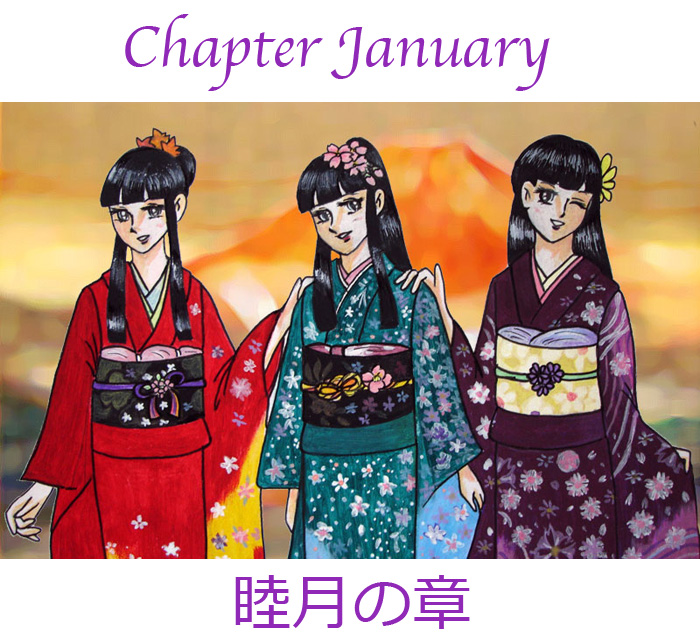
Japanese New Year’s Day

New Year’s Day is a very important event for
Japanese.
People celebrate the New Year, drinking Sake (Rice wine) called “Otoso”
and eating the special dishes called
“Ozoni” and “Osechi meals”

New Year’s Day is a pleasant day for children, as they are given New Year’s
presents called, “Otoshidama” by their parents and relatives.
“Otoshidama” can be described, “A New Year’s gif of Money”
The money is put in a small envelope called, “Pochibukuro”
Usually it is handed to the children in person
after they have said their New Year’s
Greetings.
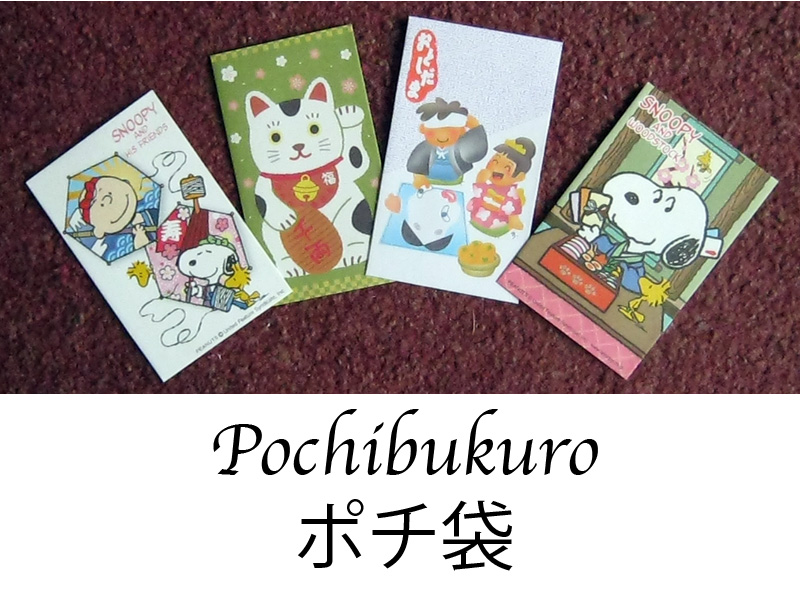
Many people go out to the temples or the shrines very early on New Year’s Day
and pray for good luck and happiness for the
year.
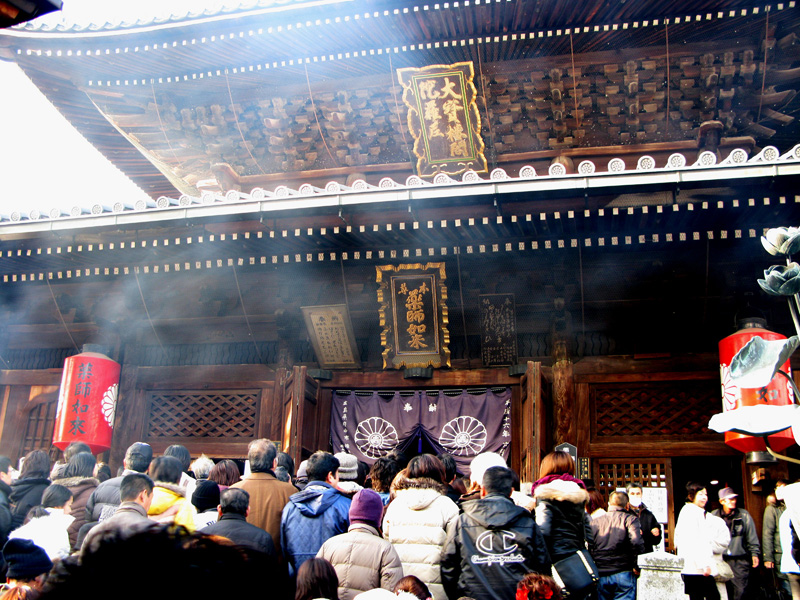
People exchange “Nengajyo”, greeting cards
during Shogatsu.
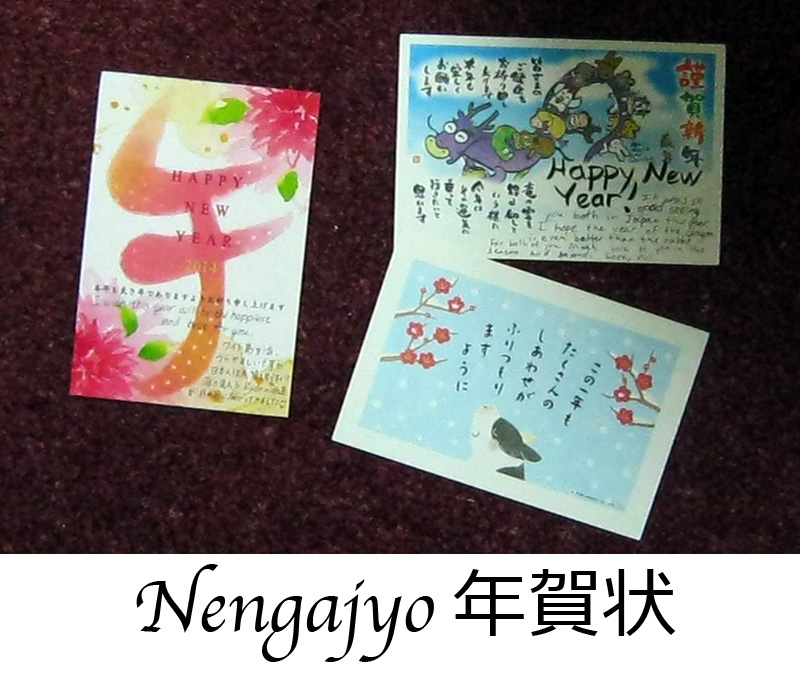
The first three days are called “Sanganichi”
There are various traditional games for New Year’s holidays.
Boys fly kites (Takoage), and girls play cards (Karutatori).
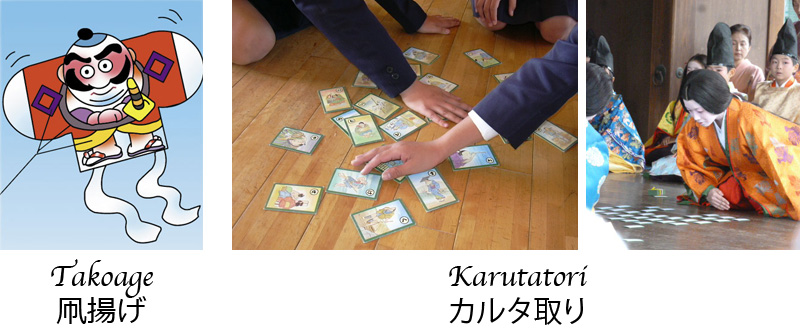
The Coming-of-Age Day
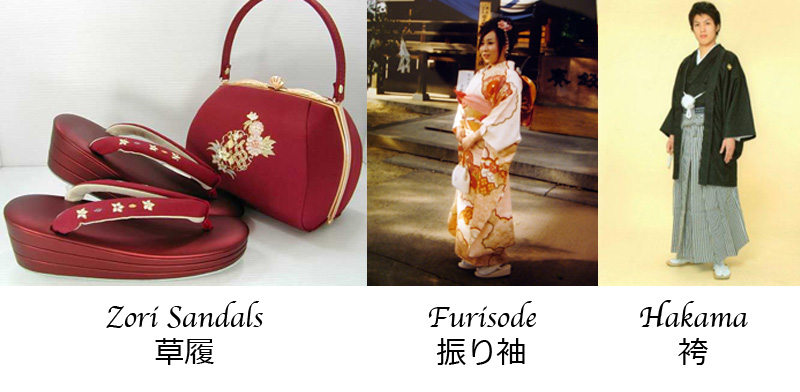
The second Monday of January is the
Coming-of-Age Day, and one of the national holidays.
Every city or village holds a ceremony for 20-year-old people.
Young people are regarded as “adults”
after celebrating this day.
They are given the right to vote as citizens for the first time.
The ceremonies are generally held in the morning at local city offices
throughout Japan.
Many women celebrate this day by wearing Furisode, a style of Kimono with long
sleeves that hang down, and Zori sandals.
Men sometimes also wear traditional dress (e.g. dark kimono with Hakama),
but nowadays many men wear formal Western clothes
such as a suit and tie more often than the traditional hakama.
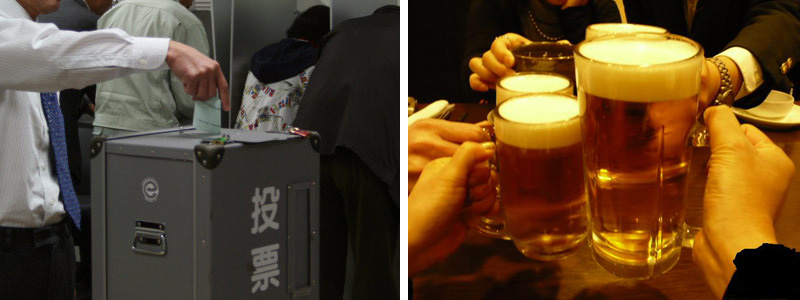
After the ceremony, the young adults often celebrate in groups
by going to parties or going out drinking.
